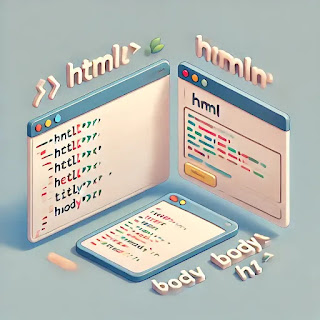How to Create a Simple Web Page: A Beginner's Tutorial
How to Create a Simple Web Page: A Beginner's Tutorial
Are you new to web development and want to create your first web page? This step-by-step tutorial will guide you through the basics of HTML, CSS, and JavaScript to build a simple, yet functional web page.
Step 1: Setting Up Your Environment
Before you start coding, you need to set up your development environment. You can use any text editor like Visual Studio Code, Atom, or even Notepad++. Make sure you also have a web browser (like Google Chrome or Firefox) to view your web page.
Step 2: Creating the HTML Structure
HTML (HyperText Markup Language) is the backbone of any web page. It defines the structure and content of your site. Open your text editor and create a new file called index.html. Then, add the following basic HTML structure:
<!DOCTYPE html>
<html lang="en">
<head>
<meta charset="UTF-8">
<meta name="viewport" content="width=device-width, initial-scale=1.0">
<title>My First Web Page</title>
</head>
<body>
<h1>Welcome to My First Web Page</h1>
<p>This is a paragraph of text on my first web page.</p>
</body>
</html>
Save the file and open it in your web browser. You should see a simple web page with a heading and a paragraph.
Step 3: Styling with CSS
CSS (Cascading Style Sheets) is used to style your web page, making it look visually appealing. Let’s add some basic styles to your page. In the same folder as your index.html, create a new file called styles.css. Add the following CSS:
body {
font-family: Arial, sans-serif;
background-color: #f4f4f4;
margin: 0;
padding: 20px;
}
h1 {
color: #333;
}
p {
color: #666;
}Now, link your CSS file to your HTML. Add the following line inside the <head> section of your index.html:
<link rel="stylesheet" href="styles.css">Refresh your browser to see the changes. Your page should now have a different background color, and the text should be styled according to the CSS rules.
Step 4: Adding Interactivity with JavaScript
JavaScript is a powerful scripting language that adds interactivity to your web page. Let’s create a simple button that changes the text on the page when clicked. In your index.html, add the following code inside the <body> tag:
<button onclick="changeText()">Click Me</button>
<p id="text">This text will change when you click the button.</p>
<script>
function changeText() {
document.getElementById('text').innerHTML = 'The text has been changed!';
}
</script>When you refresh your browser and click the button, the text in the paragraph should change.
Step 5: Final Touches
Now that you have a basic web page with HTML, CSS, and JavaScript, you can start adding more content, styles, and interactivity. Experiment with different HTML elements, CSS properties, and JavaScript functions to enhance your page.
Once you're satisfied with your web page, you can share it with others by uploading it to a web hosting service or simply sharing the files with friends.
Conclusion
Congratulations! You’ve just created your first web page from scratch. This is just the beginning of your web development journey. As you continue to learn and practice, you'll be able to build more complex and dynamic websites.
Author: Your Name

